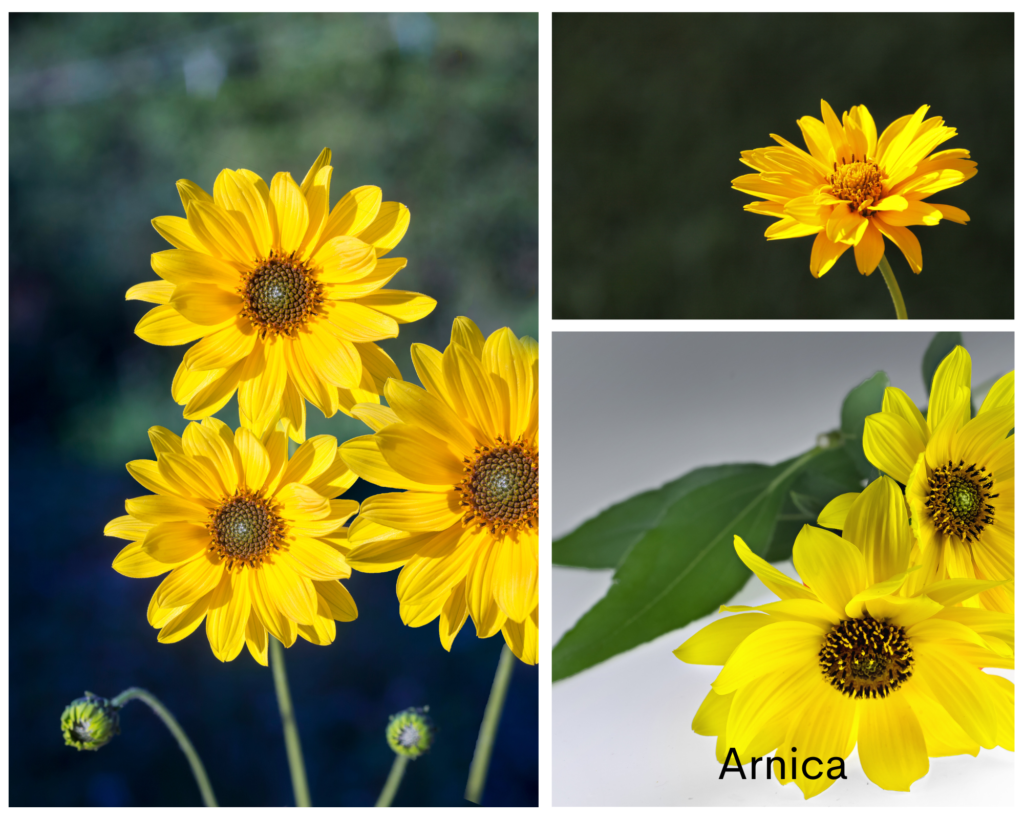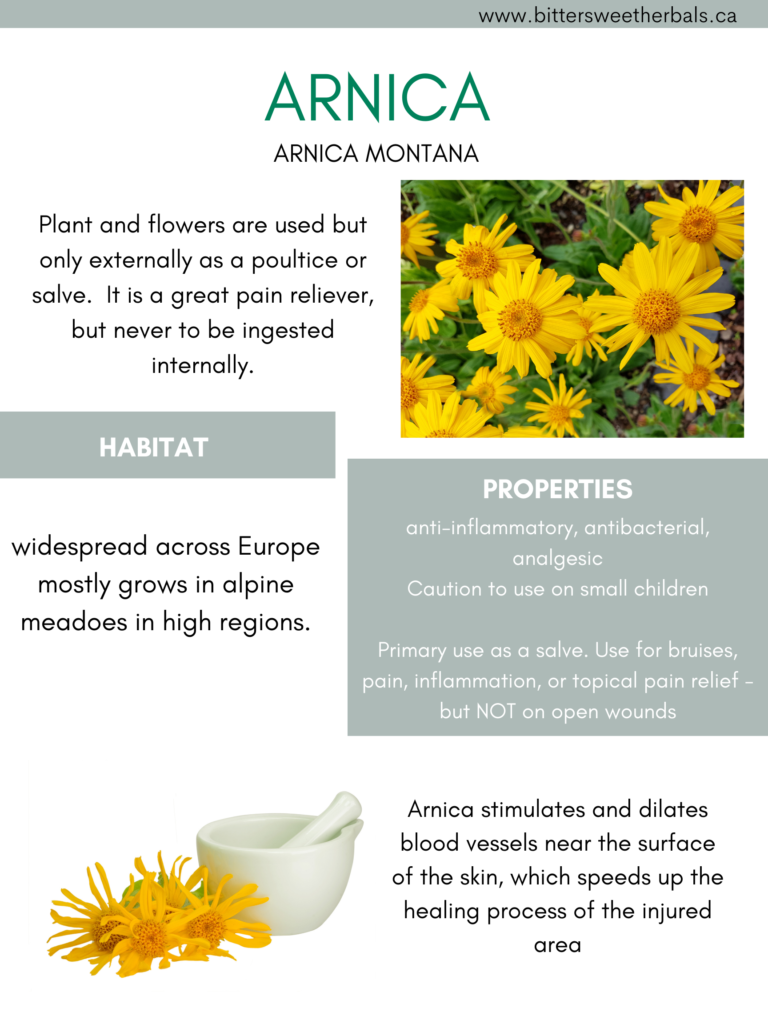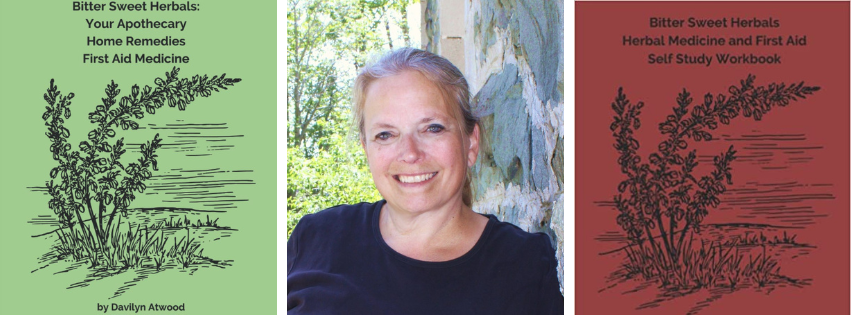Mountain Daisy – Arnica montana
High in the rugged, wind-swept mountains of the Alps, there grows a golden flower that is as resilient as it is beautiful. Its bright yellow petals, kissed by the sun, stand out against the rocky terrain. This flower is Arnica montana, known to locals as the “Mountain Daisy.” For centuries, it has been revered by healers and villagers for its remarkable ability to soothe pain, heal injuries, and restore strength to the weary.
The story of arnica begins long ago, with a wise old healer named Elda who lived in a small mountain village. Elda was known for her deep knowledge of the plants that grew in the alpine meadows and cliffs. She spent her days wandering the mountains, collecting herbs to treat the villagers’ ailments—herbs for fever, herbs for digestion, and herbs for calming the mind. But there was one plant she held in especially high regard: the radiant, golden arnica.

The villagers knew of its powers, but it was Elda who truly understood the extent of what this humble mountain flower could do. She had learned its secrets from her grandmother, who had learned it from her own elders. Arnica had been used for generations by the mountain people to treat sprains, bruises, and aching muscles. It was said to possess the very strength of the mountains themselves—able to heal broken bodies and mend torn flesh.
One summer, a terrible accident befell the village. A group of young shepherds had ventured high into the mountains with their flocks, but a sudden rockslide caught them unaware. When they returned, many were bruised and battered, some with broken bones, others barely able to walk. The entire village gathered in the square, anxious to help, but the injuries seemed too great. The elders whispered among themselves, wondering if the young men would ever recover their strength.

Elda, however, remained calm. She knew that the mountains had already provided what was needed. She set off immediately, climbing higher into the peaks than she ever had before. The trail was steep, and the rocks were sharp under her feet, but she pressed on, knowing that the healing flower awaited her.
Finally, after hours of searching, she found what she had come for: a wide meadow filled with blooming arnica flowers, their yellow petals glowing in the afternoon sun. With great care, she gathered as many blossoms as she could carry, knowing that their power would soon be needed.

Back in the village, Elda worked quickly. She prepared an oil from the arnica flowers, crushing them gently and infusing them into warm oil over a low flame. She also made poultices from the fresh blossoms and leaves, combining them with other herbs known for their healing properties. The villagers watched in awe as Elda applied the arnica to the wounded shepherds, wrapping their bruised limbs in soft cloths soaked in the golden flower’s essence.
The effects were nothing short of miraculous. The swelling in the young men’s limbs began to subside. Their bruises faded, and the pain that had gripped their bodies eased. Day by day, they regained their strength, the stiffness and soreness melting away as if the mountains themselves were lending them power. Within weeks, they were walking again, and soon they returned to their herding, stronger than ever before.

The villagers marveled at arnica’s ability to heal injuries that had seemed so dire. Word of Elda’s success spread, and travelers came from far and wide to learn of the magic flower that grew in the high meadows. Elda shared her knowledge freely, teaching others how to make the precious arnica oil and poultices, knowing that the flower’s power was a gift from the mountains to all who lived in harmony with the land.
And so, arnica’s legacy was born. The mountain flower became known as a healer of bruises, sprains, and pain—a symbol of resilience, strength, and recovery. For centuries to come, it would be used by athletes, laborers, and anyone who needed its healing touch after the strains of hard work or injury. Though small and delicate in appearance, arnica proved to be one of nature’s most powerful healers, channeling the strength of the mountains into the bodies of those who needed it most.
The Wisdom of Arnica
As time passed, arnica’s reputation only grew. Herbalists across Europe began to use it not only for physical injuries but also for the emotional bruises of life. It was said that just as arnica healed the bruises of the body, it could also mend the heart, soothing the pain of loss, heartache, and grief.
Healers understood that arnica’s power lay in its ability to restore balance. Just as the mountains endured the harshest winds and storms, only to stand strong and unyielding, so too did arnica help the human body recover from the storms of injury and pain. It was nature’s reminder that no matter how broken or bruised we may feel, healing is always possible with time and the right support.
Arnica became a staple in apothecaries and healing homes across the world. Its golden flowers were gathered, dried, and infused into oils, balms, and tinctures. It was used to soothe sore muscles after long days of labor, to reduce swelling after a hard fall, and to speed recovery from sprains and fractures. Even today, arnica remains one of the most popular remedies for injuries, a testament to its enduring power.
The Legacy of Arnica

The story of arnica is a reminder that the most powerful remedies are often found in nature. The mountains, with their rugged beauty and timeless strength, hold secrets that we are still discovering. Arnica, the “Mountain Daisy,” is one of those secrets—a humble flower that has been healing people for centuries, offering relief and recovery to all who seek its help.
Whether used by a wise healer in a small village or a modern athlete recovering from a hard workout, arnica continues to be a symbol of resilience and healing. Its bright yellow petals, shaped by the harsh winds of the mountains, remind us that even in the most challenging environments, beauty and strength can flourish.
And just as the mountains endure, so too does arnica’s gift—helping us heal, recover, and rise once again.

